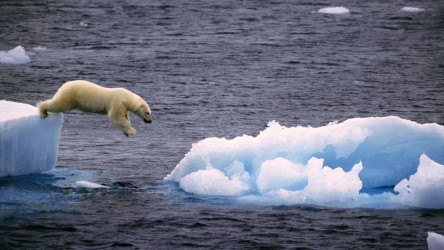Into Film Clubs
Find out everything you need to know about starting an Into Film Club.



I am constantly looking for ways to support teachers in engaging pupils and improving attainment and progress. An idea came to me when I watched a wildlife documentary with the family and was amazed how it engaged everyone alike - from ages 3 to 90! I realised this could be harnessed to teach various aspects of the curriculum while at the same time fostering an appreciation of and respect for wildlife and their habitats.
I had been approached to present a session on teaching literacy to more able pupils and began gathering ideas to link watching wildlife documentaries to the development of higher order language. I found I could include: modal verbs, precise language choice and subject specific words, precise adverbials, control of simple and complex sentences, and prepositional phrases. Here are my ideas.
I used Into Film's questions from the 3Cs (colour, camera, character) and 3Ss (story, setting, sound) framework to help pupils focus on details they may otherwise miss. Using a single shot or a short film sequence, we can ask the following questions: What can we see? What is the animal doing? What is in the background? What are the main colours in the image? How does this image make you feel?
This leads to an exploration of nouns and precise language choice to support description, and offers an opportunity to use adjectives and adjectival phrases. It introduces vocabulary that children may not have encountered before, showing progress in a lesson and over time. For example, a description of an animal's features or how it moves could encourage careful choice of language: muzzle, snout or proboscis would be a more interesting word choice than nose, while a verb such as prowl, lumber or strut would give a better illustration of movement. A description of how an animal moves - bravely, curiously, deliberately - provides an opportunity to use precise adverbials. Through language exploration, children are encouraged to use dictionaries, thesauruses or internet searches to find the exact words they need to communicate meaning to their readers.
Whilst watching any film, children will retrieve information and use inference skills to work out what is happening, as well as predicting what might happen next. Reading the film, they can be encouraged to use modal verbs by using sentence starters like 'It might...', 'It could...', 'Alternatively...' - these help children practise using the future tense as well as encouraging speculation and enquiry skills. An acknowledgment of where the animal is: on top of a mountain, behind the tree, underneath the floorboards, encourages use of prepositional phrases.
Note-taking whilst listening to the soundtrack or commentary of a film can also be beneficial in building concentration and listening skills. Listening to commentary provides an excellent model for children to imitate then adapt for themselves, eventually assimilating vocabulary and widening their repertoire, enabling them to use new words in their writing.
An experienced script writer and commentator can demonstrate how a mixture of simple and complex sentences gives writing a pace and rhythm that adds to its meaning. Emphasis and pause for effect in speech can be demarcated with punctuation in written form. Having experienced a wealth of images and sound, children can invent their own scripts, developing writing skills and nurturing a genuine thirst for knowledge. Research skills will also be developed as children seek out facts that interest them. Spelling will improve as they are exposed to new vocabulary.
This form of language acquisition and extension links directly to the new English curriculum and opens up the world of writing in an interesting, relevant way, fostering a love of words. With this type of enquiry comes the appreciation of animals and their habitats. Children begin to understand how animals have adapted to the climate and geography of their natural homes, and can be introduced to the concept of conservation and the idea that natural resources like rivers and forests must be preserved in order to protect their inhabitants from threat or extinction.
These are just a few examples of how you can use a wildlife documentary to support reading and factual or descriptive writing while simultaneously fostering an understanding and respect for the natural world. I hope you enjoy trying them out and finding more ways of inspiring children to write!
Why use film to teach literacy? Our free online course, in partnership with film education experts from the British Film Institute (BFI) - will examine the debate surrounding film as a vehicle for teaching literacy, alongside recent evidence demonstrating significant improvements in children's reading and writing through use of film texts.
You'll discover how film can be used to develop a range of abilities - decoding, inference and analysis - as well as expanding creativity and improving vocabulary.

Poignant and entertaining nature documentary about a year in the life of planet Earth with narration from Patrick Stewart.
Certificate
Viewing 4 of 5 related items.

Get in touch with your article ideas for the News and Views section.